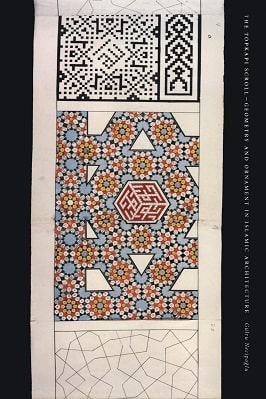
| Book Title | The Topkapi Scroll Geometry And Ornamenting Islamic Architecture |
| Book Author | Gülru Nacipoğlu |
| Total Pages | 414 |
| Book Views | |
| Language | English |
| Book Download | PDF Direct Download Link |
| Get Hardcover | Click for Hard Similar Copy from Amazon |
The Topkapi scroll geometry and ornamenting Islamic architecture
Gülru Nacipoğlu
THE TOPKAPI SCROLL GEOMETRY AND ORNAMENTING ISLAMIC ARCHITECTURE
Drawings can reveal much about architectural practice and design methods, particularly when
a building tradition lacks theoretical treatises; the Islamic architectural heritage is a case in point. In the premodern Muslim world references to architecture were often embedded in a wide variety of nonarchitectural texts and “how-to” manuals providing simple instructions without theoretical elaboration. These were complemented by collections of workshop drawings, jealously guarded
by master builders as privileged information, and by the oral workshop, traditions passed on from master to apprentice over the generations.
This makes particularly valuable the few remaining examples of drawings that once mediated
the conceptualization and transmission of architectural knowledge in the Islamic world; through these drawings one can begin to penetrate the theory and praxis of architecture and ornament.
The scroll preserved at the Topkap1 Palace Museum Library and reproduced in its entirety in this volume is an important discovery with major implications for Islamic and general architectural history. In addition to the information it provides about architectural practice, the scroll also raises broader questions pertaining to the interaction between science and art and promises to be relevant for theories of ornament, abstraction, aesthetics, and vision.
My decision to publish this rare document, which I ascribe to late fifteenth-or sixteenth-century Iran, was prompted by the necessity of making it accessible in its original form to a wide audience, both specialists in the Islamic field and nonspecialists.
The scarcity of information about architectural drafting methods in the Islamic world, which
are often assumed to have been nonexistent, adds to the significance of the Topkap1 scroll, the earliest known document of its kind.
Although this scroll throws new light on how architectural design was geometrically conceptualized, recorded, and transmitted in the particular context of late medieval Iran, it also raises more general questions about the mode of geometric patterning that dominated architectural revetments throughout the Islamic world between the eleventh and the early sixteenth centuries.
The scroll’s geometric language parallels that of late Gothic architectural drawings, a parallel informed by a shared late antique cultural heritage that often engendered similar design methods and aesthetic sensibilities. No doubt Byzantine architectural practice, too, grew out of this tradition, but unlike the medieval building practice
of Europe, which is relatively well documented by extant workshop drawings from the thirteenth century onward, that of Byzantium remains largely undocumented.
This is why I have chosen to focus on comparisons with the Latin West, only referring to the Byzantine architectural tradition when the relevant information was available.
The Topkap1 scroll’s distinctive mode of geometric design, dominated by interlocking star-andpolygon patterns in two and three dimensions,
To read more about the The Topkapi Scroll Geometry And Ornamenting Islamic Architecture book Click the download button below to get it for free
Report broken link
Support this Website
Click here to join our Telegram group for new Books